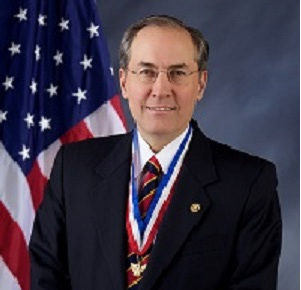View Articles By Category
- All
- Aquatics
- Awards
- Biking
- Camping
- Conservation & Environment
- COPE/Climbing
- Cub Scouting
- Fishing
- National Jamboree
- NCAP
- Outdoor Ethics/Leave No Trace
- Properties
- Range & Target Activities
- Safety
- Shooting Sports
- Sponsored Content
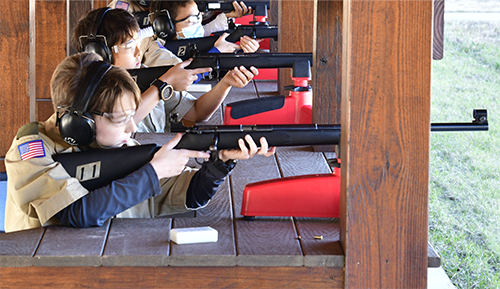
Range & Target Activities
The Range and Target Activities (Shooting Sports) currently offered by Scouting America are highly complex, requiring knowledgeable supervision, qualified instruction, and strict adherence to standard operating procedures. The following Q&A reviews upcoming September 1st program adjustments that aim to simplify these programs while ensuring safety standards are met. Prior to reviewing these FAQs, please review the upcoming changes listed HERE in the Guide to Safe Scouting.
Q: Why are range and target activities (shooting sports) part of Scouting’s programs?
A: Range and target activities provide Scouting the opportunity to instruct critical safe firearm handling to all age groups while also providing an opportunity for a Scout to learn self-discipline, concentration, mental discipline, self-reliance, self-esteem, problem-solving and responsibility. Teaching safe firearm handling includes conversations such as “What happens when you see a gun? Never touch the gun, leave it where it is, and tell an adult right away.” Scouting is committed to teaching youth how to be safe around firearms, whether at home, in their neighborhoods, or around the community.
Q: Why is Scouting updating its range and target activities (shooting sports programs) effective 9/1/2024?
A: With a focus on safety and delivery of a quality program, these program adjustments aim to simplify and further standardize range and target activities, thus enhancing the overall experience for Scouts and Scouters alike.
Q: Why is the name of shooting sports programs changing to Range & Target Activities?
A: This new name reflects both where these activities take place (on established ranges) and what these activities are.
Q: Starting in September, besides a nationally authorized camp property’s range, Scouts can participate in firearms programs on a commercial range. How will the BSA define a commercial firearm range?
A: A commercial firearm range is a supervised facility that offers a controlled environment for safe firearm practice. It will provide shooting lanes, targets, and may offer equipment rentals and training in safe firearm handling and marksmanship. Standard operating procedures are required for each firearm type used on-site. Scouting’s range and target activities must follow all of Scouting’s range and target activities policies or range standard operating procedures that are equivalently stringent, including no variation from Scouting’s limitations on firearms used. These ranges may be operated by a licensed business, a government entity or non-profit.
Q: And also, what is a nationally authorized camp property?
A: A national authorized camp property is defined by the National Camp Accreditation Program standards in SA-001. This definition is “A camp property includes any property over which a BSA council exercises long-term control that is made available to BSA units or individuals for use in BSA-branded program activities.” For full information on what is a nationally authorized camp property, please review the entire NCAP standard SA-001.
Q: My Scouts BSA troop wants to conduct a weekend activity focused on the Rifle Shooting merit badge, can we still host this event after September 1, 2024?
A: Yes. Scouts BSA troops can offer these activities with the required supervision certifications indicated in the BSA Shooting Sports Manual at either a nationally authorized camp property range(s) or at a commercial firearm range. Reminder- your unit must also have someone who has completed the online Range Activity SAFEty training. This trained adult leader must be present at the range. Note this training does not replace the requirements for certified NRA firearms instructors and range safety officers. This training will be available beginning 9/1/2024.
Q: There is a new Range Activity SAFEty training??
A: Yes. On September 1, 2024 this training will be available for unit leaders to take on My.Scouting (the same place you can take Youth Protection training online etc). Less than 40 minutes, this online training will help Scout leaders be prepared to successfully offer these programs at the unit level.
Q: Our Venturing crew is interested in participating in a pistol program. Is it still possible for us to do so?
A: Yes, Venturing crews participate in the NRA FIRST Steps Pistol Orientation at an accredited camp program (day camp, short-term camp, long-term camp) or a council organized one day event. Reminder, effective 9/1/2024, unit-level sponsored/planned Venturing and Sea Scouting pistol programs are prohibited. This program will also be available for older Scouts BSA youth.
Q: How does Scouting define “firearm”?
A: Firearms include pellet rifles, airsoft (any type), rifles, pistols, shotguns, and muzzle loading rifles and shotguns. While Scouting does not define a BB gun or “BB device” as a firearm, some states, counties, or jurisdictions may regulate BB guns as firearms, depending on their design and capabilities. Councils must review and follow any local regulations before conducting programs.
If planning an upcoming event or outing for your unit or council involving range & target activities, please remember to visit Scouting.org on September 1st to review the new National Range & Target Activities Manual and any revisions to the Guide to Safe Scouting.
Still have questions? We invite you to watch a recording of our Range and Target Activities Program Updates (a Venturing focus but all levels are reviewed) webinar that premiered on July 10. You may also attend an additional, Outdoor Program & Properties Team sponsored, webinar on August 15th. The links for both the recording and to register for the upcoming webinar may be found below.
Resources:
- Range & Target Activities Program Updates Discussion and Q&A Registration Link (August 15th Live Webinar)
https://scouting-org.zoom.us/meeting/register/tZEqce2orDotHN378fJ0lxBhit6kJGubesBC
- Range & Target Activities Program Updates Discussion and Q&A (July 10th Recording)
https://scouting-org.zoom.us/rec/share/c7osEzaX53o6tKTSRCcnbDVNmBbhK_19JcNVtbw091wDjMLf2G6ptuMz2-f5FYr8.BiklBNvgl4QfQPM9
- Guide to Safe Scouting (Online Edition)
https://stg.scouting.org/health-and-safety/gss/toc/
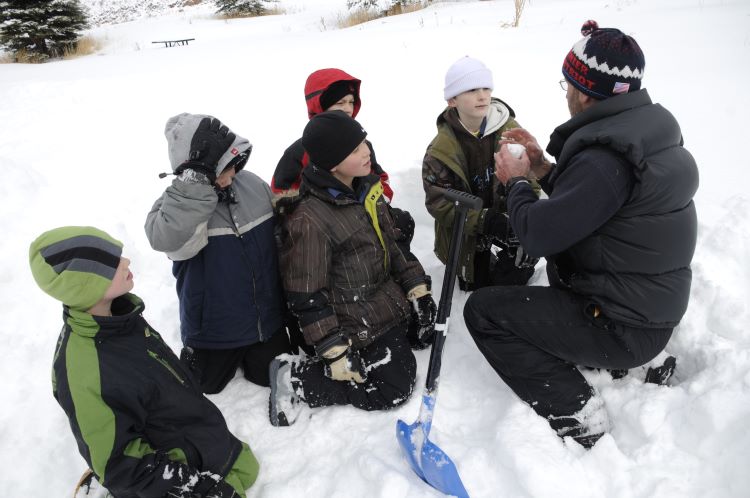
Camping
Question: How cold is too cold for Cub Scout camping?
Answer: There is no national policy for Cub Scout winter camping temperatures, rather this is a local council-based discussion and decision. A Cub Scout in Florida may feel differently about camping in 30-degree weather than a Cub Scout from North Dakota. We encourage you to engage your local council enterprise risk management committee in this discussion. As you consider how cold is too cold for your local Cub Scouts, consider the following:
- Use the SAFE checklist with particular focus on A (Assessment):
- Assess “Will our Cub Scouts and their families be able to have a fun and safe camping experience?” Cub Scout camping is designed to create excitement and build enthusiasm for experiencing camping and other outdoor adventures. If it is too cold to meet this goal, adjust the activity.
- Determine whether the unit has sufficient training, resources, and experience to host a successful camping experience, and if not, modify the activity accordingly. For example, if it is too cold to camp overnight, perhaps the event can be revised to be a day-only activity balancing indoor and outdoor time.
- Use the SAFE checklist with particular focus E (Equipment and Environment):
- Does the location still meet the assessment considerations for this time of year? For example, are the restrooms, water source and other facilities still available?
- Will our Cub Scouts and their families be prepared for a safe camping experience with appropriate cold weather camping gear and equipment?
- Be prepared to adjust the activity plans if the conditions change.
Check out these resources:
- Utilize the SAFE checklist https://stg.scouting.org/health-and-safety/safe/
- Winter Activity Safety Moment https://stg.scouting.org/health-and-safety/safety-moments/winter-activity/
- Guide to Safe Scouting Winter Activities https://stg.scouting.org/health-and-safety/gss/gss12/
- BSA Field Book (available on Scoutshop.org)
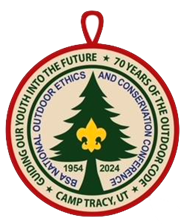
Conservation & Environment
Guiding Our Youth Into the Future 70 Years of the Outdoor Code
Main Conference: September 12-15, 2024
Pre-conference Courses: September 9-12, 2024
Location: Camp Tracy, Salt Lake City, UT
The National Outdoor Ethics and Conservation Conference is the Boy Scouts of America’s largest gathering of volunteers and professionals in the areas of Outdoor Ethics and Conservation. During the two days of the conference you can experience:
- Elective sessions
- Keynote speakers
- Exhibits with great ideas to take back to your council
- Guided discussions with land management professionals
- Representatives on-hand from Leave No Trace and Tread Lightly!
- Contests
- Fellowship with other Scouters who are passionate about conservation
Registration is open now! For more information about this exciting opportunity, please visit the following website: https://stg.scouting.org/outdoor-programs/oec-conference/
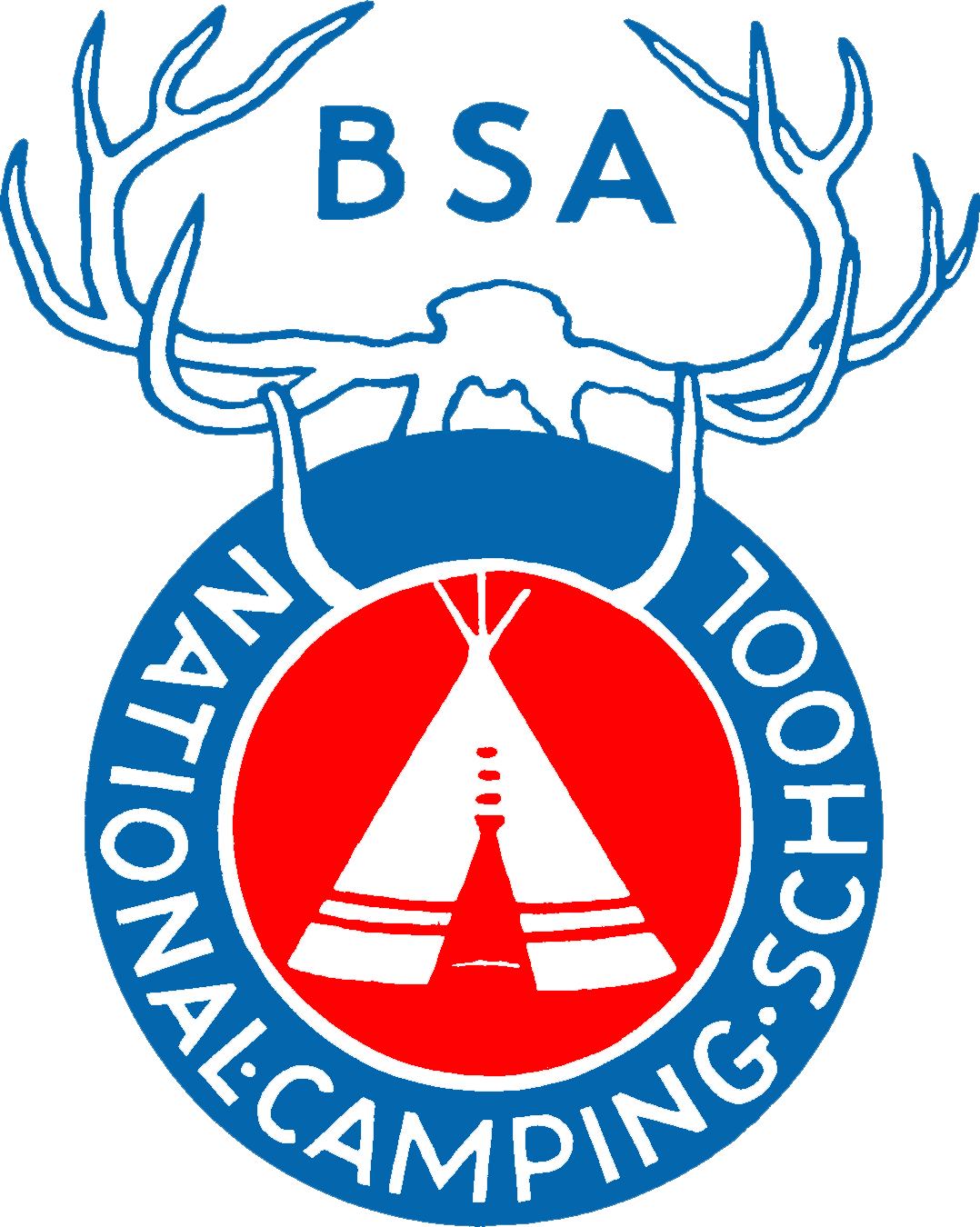
NCAP
The Short-term Camp Administrator plays a crucial role in the Boy Scouts of America National Camp Accreditation Program, ensuring that short-term camps meet the organization’s high standards for safety, program quality, and overall experience. This role involves overseeing the accreditation process for council-sponsored camps with one, two or three nights of camping involved. The administrator serves as a liaison between the camp and the national organization, working closely with camp leaders and staff to ensure compliance with established guidelines.
The Short-term Camp Administrator also serves as a resource for event committees, offering guidance on best practices, risk management, and program enhancement. This role plays a vital part in maintaining the high standards associated with the Boy Scouts of America, ensuring that short-term camps contribute positively to the overall Scouting experience.
These courses will be facilitated via Zoom through the National Service Center and consist of several modules designed to prepare participants to manage short-term camps including planning, program development, staff recruitment and assessment. Upon registration, participants will receive a link to log into the online training room.
FIRST TIME CERTIFICATION COURSES ($75):
This training is for individuals who have not previously been certified as Short-term Camp Administrators or those whose training has been expired for more than 60 days. Training will last about 8.5 hours with interactions and discussions designed to help meet the needs of the participants while conveying strategies to serve in this role. Course materials will be made available electronically.
• February 20, 22, 27, 29, 2024 – This is a weeknight course, held from 7 pm to 9 pm Central Time. Must attend all four sessions to be certified.
• March 23rd, 2024 – 9 AM Central Time
• April 20th, 2024 – 9 AM Central Time
• May 18th, 2024 – 9 AM Central Time
RECERTIFICATION COURSES ($65):
Individuals who have previously completed Short-Term Camp Administrator training may be eligible for recertification. Your Short-Term Camp Administrator training cannot be expired for more than 60 days at the start of the class. Please refer to the certification card you were issued to determine when your training expires or email NCS@Scouting.org for confirmation. Short-term Camp Administrator recertification training is approximately 4 hours.
• February 20, 22, 2024 – This is a weeknight course, held from 7 pm to 9 pm Central Time. Must attend both sessions to be certified.
• March 23rd, 2024 – 9 AM Central Time
• April 20th, 2024 – 9 AM Central Time
• May 18th, 2024 – 9 AM Central Time
READY TO REGISTER? CLICK THE LINK BELOW TO BE REDIRECTED TO THE ONLINE REGISTRATION PORTAL.
CLICK HERE TO REGISTER NOW
For more information about Short-term Camp Administrator NCS, please email NCS@scouting.org.
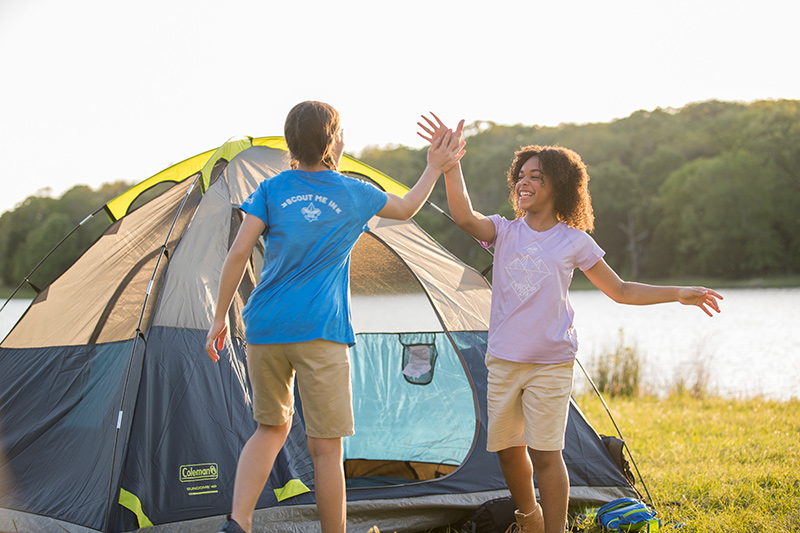
NCAP
Planning a short-term camp within the Boy Scouts of America (BSA) framework requires meticulous attention to safety considerations. The BSA’s National Camp Accreditation Program (NCAP) provides a comprehensive set of guidelines to ensure the well-being of participants. While NCAP offers valuable standards that help create a safer environment, short-term camp administrators and event organizers must still be proactive in addressing safety concerns. This article briefly introduces ten critical aspects of safety planning when organizing a council-sponsored short-term camp under NCAP guidelines (scouting.org/ncap).
Site Assessment:
Before anything else, organizers must conduct a thorough risk assessment of the event location. Using the NCAP Site Appraisal Form is a great start, especially if your short-term camp is not held at a BSA NCAP accredited property. Identifying potential hazards such as uneven terrain, wildlife encounters, or proximity to bodies of water is crucial. Addressing these risks in advance allows for effective mitigation strategies to be put in place. Check out NCAP Standard SA-002 for details on assessing your site location.
Staff Training:
A well-trained staff is the backbone of a safe camp. Organizers must ensure that all staff members are proficient in first aid, emergency response, and BSA safety protocols. Regular training sessions and drills contribute to a quick and effective response in case of emergencies. Ensure you have thoroughly reviewed the training required for each position and the programs you will offer. The Staff Qualification “400” series standards are a critical place to start. Be sure to view the verification section for each standard so you know what training verifications specifically to look for.
Health and Medical Considerations:
Accurate health records of all participants, including dietary restrictions and medical conditions, should be collected during registration. Having qualified medical personnel on-site is required, and an emergency medical plan must be in place, including having a copy of the current medical policies for your council. Touch base with your local council health supervisor to be sure you have the most current copy. Check out the HS “500” series standards, especially HS-503, HS-505 and more. For detailed requirements for your camp health officer for your location, review SQ-405.
Transportation Safety:
If the camp involves transportation, adherence to BSA transportation policies is paramount. This includes driver qualifications, vehicle maintenance, and seatbelt usage. Additionally, organizers should have a contingency plan for unexpected travel-related issues. In 2024 information was included in NCAP standard PS-216 to also include additional youth protection considerations as well.
Campsite Security:
Ensuring the security of the campsite is critical for the well-being of participants. Adequate lighting, secure sleeping arrangements, and surveillance measures should be in place. Event organizers should collaborate with local law enforcement to address any security concerns in the surrounding area. When is the last time your camper security plan was updated for your specific short-term camp location? This would be a great project for your local council enterprise risk management committee. Visit NCAP standard AO-804 for details on camper security.
Aquatics Safety:
If the camp involves water activities, event organizers must strictly adhere to BSA aquatics guidelines. Ensuring proper supervision, life jacket usage, and emergency response plans for water-related incidents are essential components of a safe short-term camp. The 2024 NCAP standards and the Guide to Safe Scouting “Safe Swim Defense and “Safety Afloat” policies will help you plan for aquatics activities at your short-term camp.
Fire Safety:
Camps often involve campfires, cooking, and other fire-related activities. Compliance with BSA fire safety guidelines, including supervision during cooking, and appropriate fire extinguishing equipment, is crucial to prevent accidents. Review NCAP standards FA-703,705,706 as you plan your short-term camp.
Weather Preparedness:
Unpredictable weather conditions pose a significant threat to camp safety. Monitoring weather forecasts, having an emergency shelter plan, and educating staff and participants about weather-related risks are essential components of safety planning. NCAP standard AO-805 helps each of us prepare for all types of emergencies, including weather. These emergencies may vary based on the time of year you are hosting your short-term camp.
Communication Protocols:
Establishing effective communication channels within the camp is vital. Whether through two-way radios, designated meeting points, or other means, clear communication ensures a rapid response to emergencies and facilitates coordination among staff members. NCAP standard AO-807 has details on how you can be prepared to communicate effectively.
Emergency Evacuation Plan:
Every camp must have a well-defined emergency evacuation plan. This plan should account for various scenarios, including natural disasters or medical emergencies. Regular drills should be conducted to familiarize staff and participants with evacuation procedures. A full list of emergencies you must have a plan for are included in NCAP standard AO-805. This list should also be reviewed by your local council enterprise risk management committee to determine if any other plans should be developed for your specific event and location.
Organizing a short-term camp under the standards set forth in the National Camp Accreditation Program requires a comprehensive approach to safety planning. Each short-term camp must have a currently certified Short-term camp administrator as well. By addressing risk factors, prioritizing staff training, and implementing robust safety protocols, event organizers can create an environment where participants can enjoy enriching experiences while minimizing potential hazards. Ultimately, the goal is to uphold the aims of the Boy Scouts of America while emphasizing the safety of all involved in the camping experience. It’s a new year so be sure you use the newest standards – 2024. These standards and other critical resources are available online at stg.scouting.org/ncap.
Additional resources:
National Camp Accreditation Program – 2024 Standards
Guide to Safe Scouting
Standards at a Glance (Short-term Camp)
Scouting.org Short-term Camp webpage
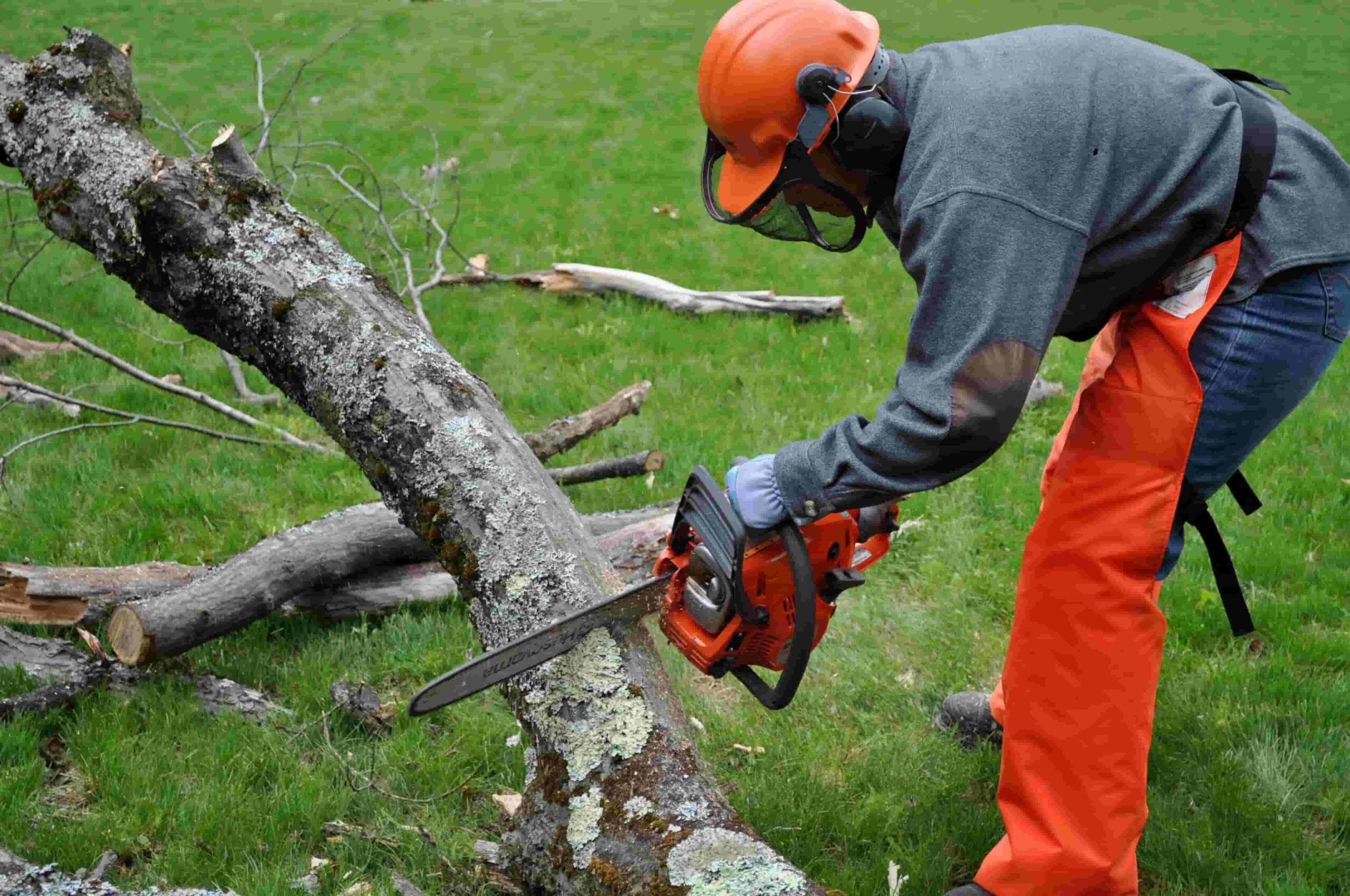
Properties
Scouting America properties rely on chain saws to help clear trails, remove deadfalls, clear timber, and stockpile wood for campfires and heating buildings. To allow for this use, specific guidelines for safety have been adapted for use at all Scouting America activities.
National Camp Accreditation Program Standard FA-712 requires that any person who operates a chain saw be approved by the council designee. In addition, chain saw operators must be at least 21 years old and meet one of the following requirements: be a professional forester with current credentials and liability insurance; be a certified arborist with credentials; have written documentation of training in chain saw techniques from either (1) a state or federally recognized chain saw training course approved by the council or (2) the BSA Chain Saw Basic Training Course (Training Code S59). NOTE: If you choose Chain Saw Basic, the facilitators for this course must be experienced chainsaw operators AND be approved by your local council Scout Executive or designee. Reminder, effective September 1, 2021, the BSA Chain Saw Basic Training Course is good for five years. Those completing the course prior to September 1, 2021, will be considered trained until September 1, 2026.
LET’S LOOK AT ACTUAL SAFETY STEPS AND OPERATION:
Before Starting a Chain Saw
- Check controls, chain tension, and all bolts and handles to ensure that they are functioning properly and that all are adjusted according to the manufacturer’s instructions.
- Always make sure that the chain is sharp, and the lubrication reservoir is full.
- Start the saw on the ground or on another firm support. Drop-starting, or the act of pushing the saw away from the body with one hand while simultaneously pulling on the starter cord handle with another, is never allowed.
- Start the saw at least 10 feet from the fueling area, with the chain’s brake engaged.
Fueling a Chain Saw
- Use approved containers for transporting fuel to the saw.
- Dispense fuel at least 10 feet away from any sources of ignition when performing construction activities. No smoking during fueling.
- Use a funnel or a flexible hose when pouring fuel into the saw.
- Before refueling, turn off the chain saw and let the motor cool down. Never attempt to fuel a running or HOT saw.
Operating a Chain Saw Safely
- Clear away dirt, debris, small tree limbs, and rocks from the saw’s chain path. Look for nails, spikes, or other metal in the tree before cutting.
- Always have a spotter on hand—someone who can watch for safety hazards while you cut.
- Shut off the saw or engage its chain brake when carrying the saw on rough or uneven terrain.
- Keep your hands on the saw’s handles and maintain secure footing while operating the saw.
- Proper personal protective equipment must be worn when operating the saw, which includes hand, foot, leg, eye, face, hearing, and head protection.
- Do not wear loose-fitting clothing.
- Be careful that the trunk or tree limbs will not bind against the saw.
- Watch for branches under tension. They may spring out when cut.
- Gasoline-powered chain saws must be equipped with a protective device that minimizes chain saw kickback.
- Be cautious of saw kickback. To avoid kickback, do not saw with the tip. If equipped with a tip guard, keep it in place.
- Have an appropriate first-aid kit within easy access.
RESOURCES
- Guide to Safe Scouting
- Person Protective Equipment: https://filestore.scouting.org/filestore/healthsafety/pdf/680-028.pdf
- Chain Saws Safety Moment: https://stg.scouting.org/health-and-safety/safety-moments/chain-saws/
- BSA Scouting Safely Checklist: https://stg.scouting.org/health-and-safety/safe/

Outdoor Ethics/Leave No Trace
September 12-14, 2024
🌲 Unleash your adventurous spirit at the 2024 BSA National Outdoor Ethics & Conservation Conference! 🏕️ Mark your calendars for September 12th-14th at stunning Camp Tracy, just east of Salt Lake City, UT. But wait, there’s more! Dive into a week of pre-conference offerings from September 9th-12th, expanding your knowledge and expertise.
🔍 Explore the theme that will set us on a course for the future as we lean on our Outdoor Ethics and Conservation legacy: “Guiding Our Youth Into The Future ~ 70 Years Of The Outdoor Code.” Get ready for an unforgettable experience as we celebrate seven decades of the Outdoor Code and chart a course for the future.
📅 It’s never too early to save the dates – so lock them in NOW! Keep an eye on our Facebook page and website for exciting updates about the conference. This isn’t just a conference; it’s a journey into the heart of BSA Outdoor Ethics & Conservation. See you there! 🌿 #AdventureAwaits #OutdoorEthics2024
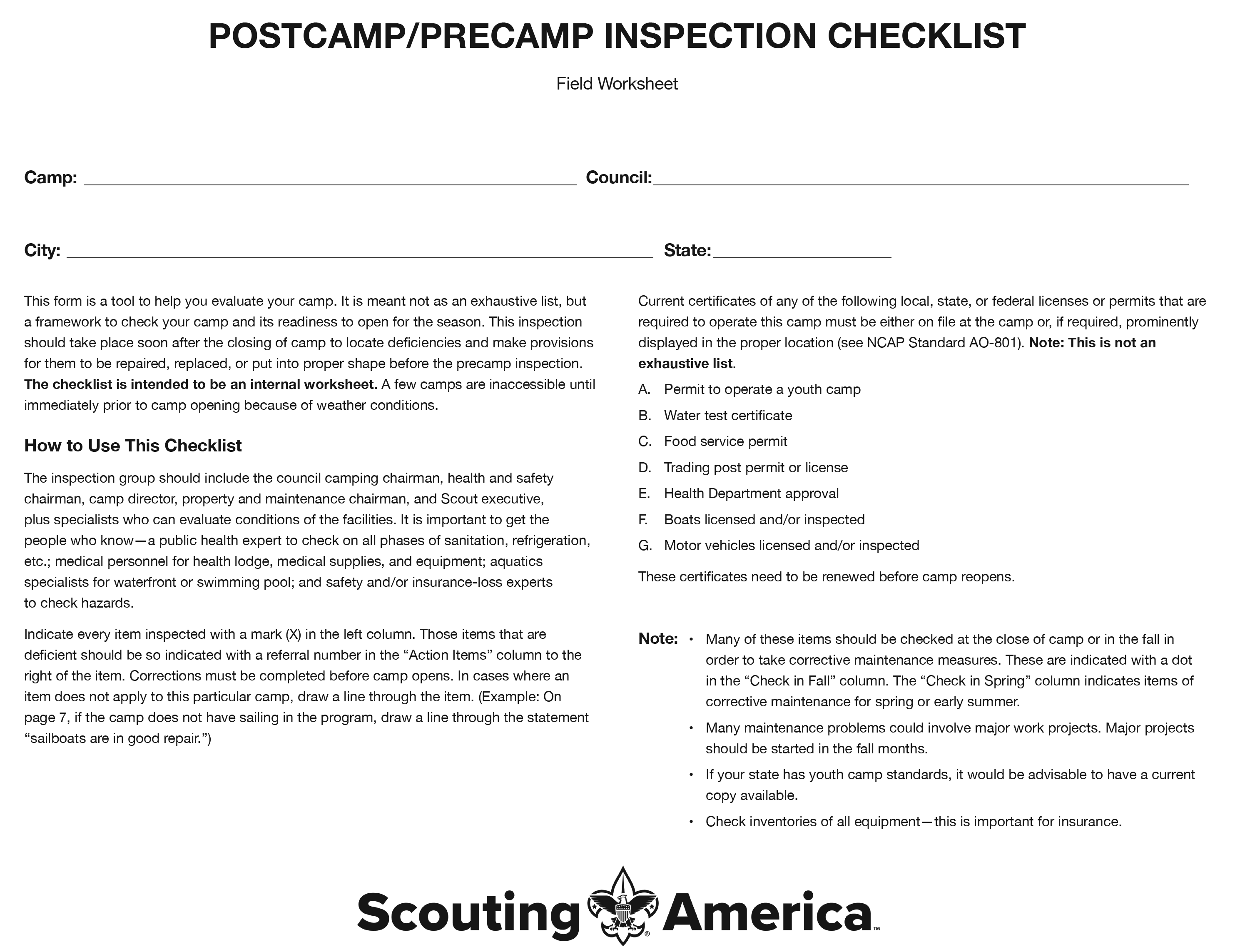
NCAPProperties
Scouting America is excited to announce the release of its newly updated Pre-Camp and Post-Camp Inspection Form, a comprehensive tool designed to enhance safety, sustainability, and organization during camping experiences. This updated form is now available for download and serves as an essential resource for Scout leaders to ensure their campsites are both ready for use and properly restored after each visit.
A Streamlined Process for Camp Management
The updated form simplifies the often complex process of campsite preparation and cleanup by offering a clear, step-by-step checklist. Covering key areas such as safety hazards, equipment inspections, waste disposal, and environmental restoration, the form ensures that no detail is overlooked. Its user-friendly format is designed for both experienced camp management professionals and volunteers and those new to the process, making it a versatile tool for all units.
Promoting Long-Term Planning
Beyond immediate use, the form is a powerful asset for long-term planning in local councils. By consistently documenting pre- and post-camp conditions, leaders can identify trends, recurring issues, and areas requiring maintenance or improvement. This data empowers councils to allocate resources more effectively, schedule necessary repairs, and proactively address environmental or safety concerns.
Ensuring Safety and Compliance
Safety is a cornerstone of Scouting, and the updated inspection form reinforces this value. Leaders can systematically assess potential risks, such as unstable ground or hazardous debris, ensuring a safe experience for all participants. Additionally, using the form helps units meet local regulations and Scouting America guidelines, demonstrating a commitment to responsible outdoor practices.
Per FA-701, the Pre-Camp and Post-Camp Inspection process should be completed before the Declaration of Readiness. For camp properties that serve solely as year-round camps, the review may be scheduled at the convenience of the council, so long as it is conducted annually .
Strengthening Local Councils
For councils, adopting the updated form ensures consistency and standardization across camp properties. The collective data gathered from multiple campsites can inform strategic planning, infrastructure improvements, and program development. By integrating the form into their operations, councils can better support their properties and enhance the overall quality of their programs.
A Tool for the Future
Scouting America’s updated Pre-Camp and Post-Camp Inspection Form is more than just a checklist—it’s a step toward a safer, more sustainable, and better-organized future. By embracing this tool, camp leaders and councils can elevate their camping programs and properties while preserving the natural environments that inspire generations of Scouts.
Get Started Today
Your council is encouraged to download the updated form and incorporate it into their property’s opening and closing procedures. By adopting this resource, camp management can contribute to a legacy of excellence, ensuring that every camping experience leaves a lasting positive impact on both participants and the environment.
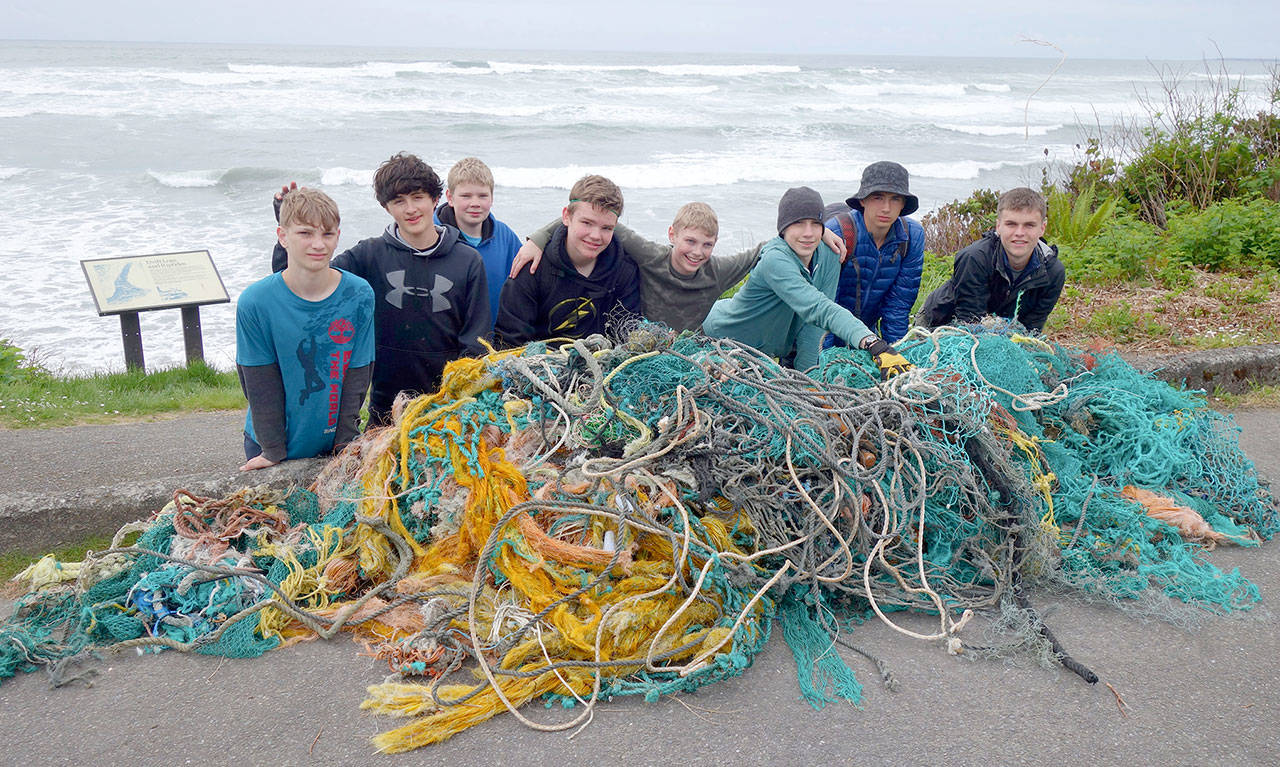
Conservation & Environment
In celebration of the 70th anniversary of the Conservation Good Turn for America, Scouting America is introducing Scouting for Clean Waterways, a nationwide initiative aimed at addressing the critical issue of waterway and marine debris. This program, in partnership with Clean Hub and Goal Clean Seas Florida Keys, offers Scouts of all ages the opportunity to make a meaningful impact on the health of our waterway ecosystems. Clean Hub has agreed to match the poundage of plastics that Scouting America collects and removes from these areas and coordinate the collection in other countries. This partnership doubles the impact that we collect.
The concept of Scouting for Clean Waterways was launched as part of an existing Sea Base program in 2022. The program is coordinated by the National’s Outdoor Program & Properties Team, Outdoor Ethics & Conservation Subcommittee and the International Committee.
Why it matters
Each year, millions of tons of plastic and other man-made materials enter our water bodies, endangering marine life, disrupting habitats, and imposing economic costs. This aquatic trash often comes from dry lands miles away from our water resources. Aquatic trash poses a significant threat to the health of our oceans, lakes, rivers, and associated ecosystems. By participating in Scouting For Clean Waterways, Scouts can help address this critical issue and make a positive difference in their communities and beyond.
Scouting For Clean Waterways also supports several Sustainable Development Goals (SDGs) outlined by the United Nations, including:
- Clean Water and Sanitation
- Life Below Water
- Life on Land
- Responsible Consumption and Production
- Partnerships for the Goals
How can my unit get involved?
- Talk with your council’s leadership to see if they are planning on coordinating any large council or district events. If not, start organizing a clean up for everyone in your unit to participate.
- Visit the Scouting for Clean Waterways website: Here you can find all the program-related documents that will help you plan your unit’s Scouting for Clean Waterways service project including a Quick Guide to the program specifics, In addition to information about Scouting for Clean Waterways, at the bottom of the webpage you can also register to receive e-mail updates. Be the first to know about important program milestones and deadlines. The link to the SCW website is: https://stg.scouting.org/outdoor-programs/scouting-clean-waterways/.
- View and follow the Scouting for Clean Waterways Facebook page: This is another great resource when planning your SCW service project. Learn about best practices and successful projects completed by other units.
- Once you have completed your clean up, go to Scoutbook and enter it in the service hours area, and record it as a Scouting for Clean Waterways project. Your information will be recorded as part of the nationwide initiative. When you post pictures on your unit’s social media feeds, please include #cleanwaterscouts.
Units, Districts and Councils can conduct these clean ups any time through out the year. A lot of councils are aiming for April, May and June which coincides with Earth Day and Earth Month, but any time works. Unfortunately there is a lot of trash, so any and everything helps.
For specific questions please check the website, the Facebook page, or email cleanwaterscouts@scouting.org
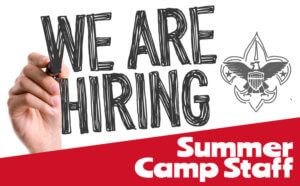
NCAP
BSA summer camps serve as the ultimate playground for our Scout adventurers, fostering growth and unforgettable experiences. But behind every thrilling moment lies a team of dedicated staff. So, how do we ensure we assemble the best staff while ticking all the legal boxes? Let’s delve into the hiring process, including some of the vital legal considerations and savvy practices, and discover a fantastic platform for job postings: Scout Life Jobs.
The Role of Legal Considerations in Hiring Staff
Before diving into the hiring process, let’s address the legal side:
- Equal Opportunity Employment: Ensuring fair treatment for all applicants, regardless of race, gender, religion, or other protected characteristics, is vital. Review your hiring practices to ensure they are in compliance.
- Background Checks: To guarantee the safety of our Scouts, conducting thorough background checks for all potential staff members is a must. NCAP Standard SQ-401 requires every staff member of long-term camp and many day camp staff be registered in the specific camp staff code for their age. Doing so ensures an annual criminal background check and screening takes place.
- Compliance with Documentation: Completing all necessary employment paperwork diligently, including contracts, agreements, and required certifications, is crucial to maintain legal compliance. Review your documentation practices with your local HR attorney and double check your processes for each step. Certain states require additional documentation so be sure you are up to speed on state requirements. Looking for a resource? Check out the ACA’s State Laws and Regulations website.
- Know who you are hiring: There are specific requirements for youth to work along with job limitations based on age. Be sure to visit the department of labor website https://www.dol.gov/agencies/whd/youthrules/young-workers for more information.
Best Practices for Hiring Staff
- Start NOW and expand your search area: Initiating the hiring process in advance and leveraging various channels such as local Scout troops, universities, and online platforms widens the pool of potential candidates. Consider using online job postings. Make sure to include “summer job” page on your local council website. (Hint: use “Summer Job” vs the camp name and job title gets you better search results.)
- Thorough Screening and Interviews: Conducting comprehensive interviews to assess a candidate’s skills, experiences, and alignment with Scouting principles is essential.
- Embrace Diversity and Clarity: Striving for diversity in the staff team and ensuring clear communication about camp expectations and responsibilities fosters an inclusive and committed environment.
Leveraging Scout Life Jobs for Job Postings
For an excellent platform to post job opportunities within the Scouting community, consider using Scout Life Jobs:
- Targeted Audience Reach: This platform attracts candidates who are passionate about Scouting and the outdoors, ensuring a higher likelihood of finding individuals who resonate with your camp’s mission.
- User-friendly Interface: Both job seekers and recruiters benefit from its user-friendly layout, making the process seamless and accessible.
- Aligning with Scout Values: By using Scout Life Jobs, we reach individuals who understand and value the core principles of Scouting, fostering a team dedicated to upholding these values. Visit the Scout Life Jobs website and start posting your open positions today!
In Conclusion
In the realm of BSA summer camps, a stellar staff team is the bedrock of memorable experiences. By aligning our hiring practices with legal obligations, adopting smart strategies, and utilizing platforms like Scout Life Jobs, we can build a team passionate about creating enriching and safe experiences for our Scouts.
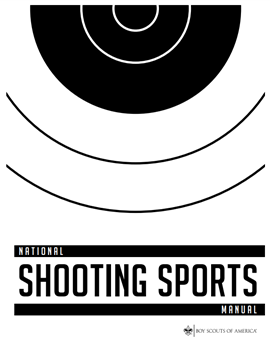
Shooting Sports
From BB gun shooting, archery, and sling shots at Cub Scouts to pistols and long rifles in Venturing, shooting sports can be an exciting experience for all Scouts in the BSA. So how do you implement these programs, who can do what and what resources are available?
First one of the best resources for you to use when planning a shooting sports program is the BSA National Shooting Sports manual posted on the BSA shooting sports website. Newly revised in 2022, the National Shooting Sports Manual is the go-to location and one stop for all things BSA shooting sports related. The manual includes information about:
- Shooting sports programs by rank
- Required training and supervision
- Unit program
- District and council programs
- Specialty programs
The National Shooting Sports Manual contains information about all approved shooting sports of the BSA. As stated in the Guide to Safe Scouting, if it is not listed in the shooting sports manual or our program literature, it is not an approved shooting activity. When there is a question, use this new resource as your guide.
In addition, the BSA age appropriate guidelines can be found in the Guide to Safe Scouting. On this chart you will be able to determine the kinds of programs that are appropriate for your Scouts to enjoy. BSA shooting sports program offer a diverse group of options based on age and ability levels. Remember: Cub Scouts can only participate in shooting programs as a part of a district or council event. Shooting sports are not a unit activity in Cub Scouting.
Shooting sports can add adventure and fun to your unit program (for Scouts BSA, Venturing and Sea Scouting) or your district or council events and activities. Following the guidance in the updated BSA National Shooting Sports manual will ensure you are “on target” with your programs and that they will meet the standards of the BSA. If you have questions about shooting sports, refer to the shooting sports manual or reach out to shooting.sports@scouting.org.

NCAP
Distracted driving poses a serious risk to everyone on the road, especially when driving to camp with Scouts. As we approach April, which is Distracted Driving Awareness Month, it’s crucial to remind Scouters and parents transporting Scouts about the dangers of not fully focusing on the road. According to the National Highway Traffic Safety Administration (NHTSA), distracted driving claimed 3,522 lives in 2021 alone, and the numbers have been increasing steadily.
There are three main types of distractions while driving: visual, manual, and cognitive. Visual distractions take your eyes off the road, manual distractions take your hands off the wheel, and cognitive distractions take your mind off driving. Texting while driving is one of the most dangerous distractions, as it involves all three types. Other common distractions include talking on the phone, eating, grooming, using navigation systems, and adjusting music or climate controls.
To ensure the safety of everyone on the road, especially when transporting Scouts, here are five tips to remember:
- Put your phone away: Avoid using your phone for calls, texts, or browsing while driving. If you must use your phone, pull over to a safe location. Encourage everyone to take the “It Can Wait” pledge.
- Plan ahead: Familiarize yourself with the route and directions before hitting the road. Use a GPS device or app that provides voice-guided directions.
- Secure loose items: Make sure all gear and equipment in the vehicle are properly secured to prevent them from becoming projectiles in the event of a sudden stop or crash.
- Avoid eating while driving: Eating can be distracting and take your hands off the wheel. If you need to eat, pull over to a safe location.
- Stay focused: Keep your mind on driving and avoid engaging in other activities that can take your attention away from the road.
April is the perfect month to reinforce these important principles to the Scouters and parents driving Scouts to camp this summer. You might consider including this topic in your Camp Leader Guide and mentioning this topic during your pre-camp leadership meeting (see NCAP standard PD-108). There are several resources you can utilize:
- BSA’s Distracted Driving Safety Moment
- Video – National Safety Council – Distracted Driving Calls Kill
- US Department of Transportation NHTSA Distracted Driving Resources
Email blast!
Email blast!




